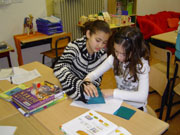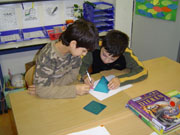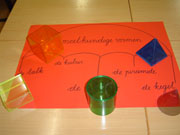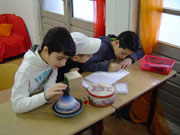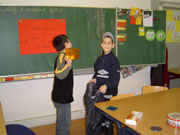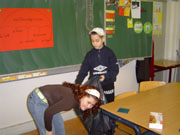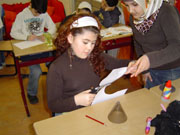Aboe Da’oedschool
Utrecht
Lesson No. 1: Geometrical forms in daily life
Purpose:
The children learn the names for various geometrical forms and learn
to recognise these forms in objects they use or see in daily life.
Materials:
Various wrapped items which have the shape of a geometrical form (e.g.
a box of chocolates or cookies)
Examples of geometrical forms
Objects in the classroom
Introduction:
The teacher shows three wrapped items with various geometrical forms
(a box of chocolate, a box of cookies, a book). The children guess what
will be in it.
Main part:
- The teacher discusses the forms of the wrapped items.
- The teacher discusses other geometrical forms on the basis of plastic
examples.
- The children look for objects in the classroom with the shape of a
geometrical form.
- The children tell the name of a geometrical form which they can not
see but only feel (in a big plastic bag).
Conclusion:
The teacher repeats the names of geometrical forms and asks the children
to look at home for other objects with the shape of a geometrical form.
Purpose:
Children learn to
make a geometrical form.
Materials:
Paper
Pencils
Scissors and glue
Introduction:
The teacher reminds the children of the former lesson. He or she introduces
the map of various geometrical forms and tells the children that today
they will make a geometrical form.
Main
part:
Children design maps for various geometrical forms.
Conclusion:
The children show their work and tell which problems they had in the
process of making them and how they solved these problems.
